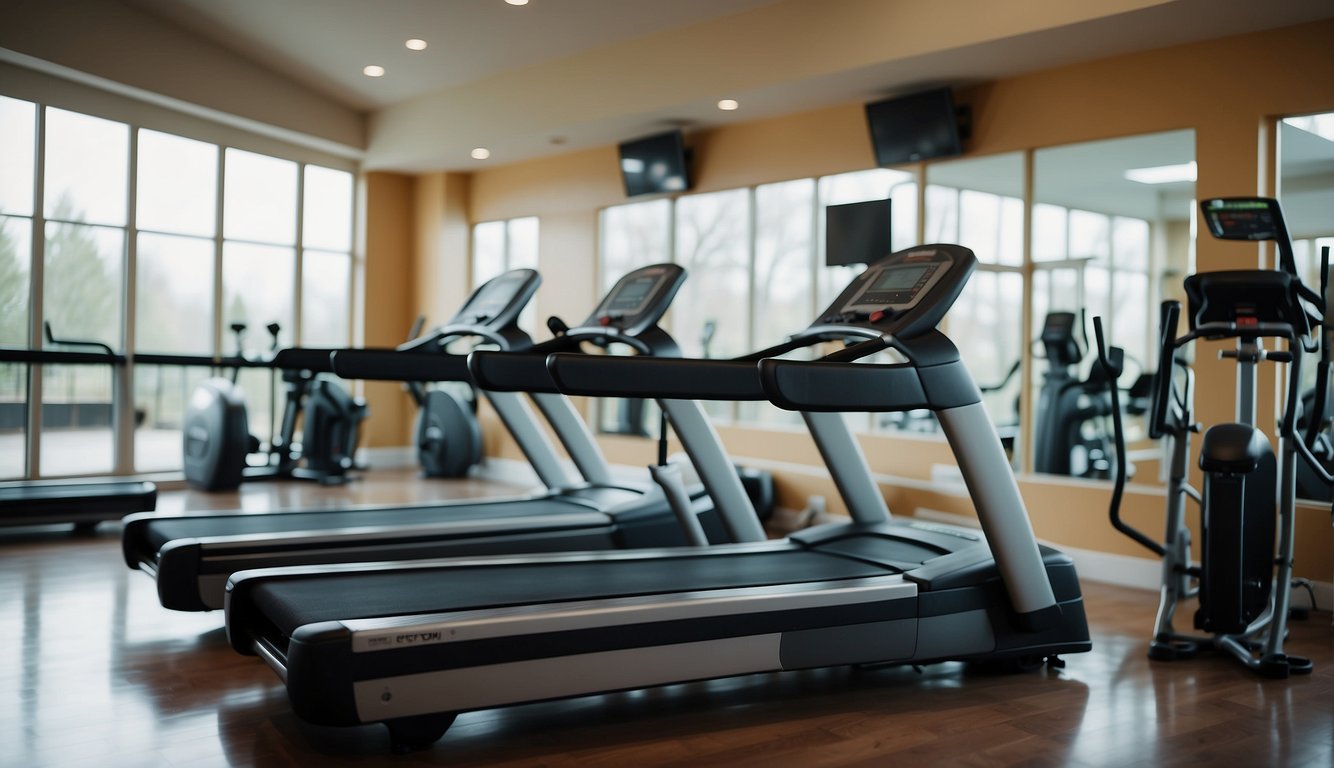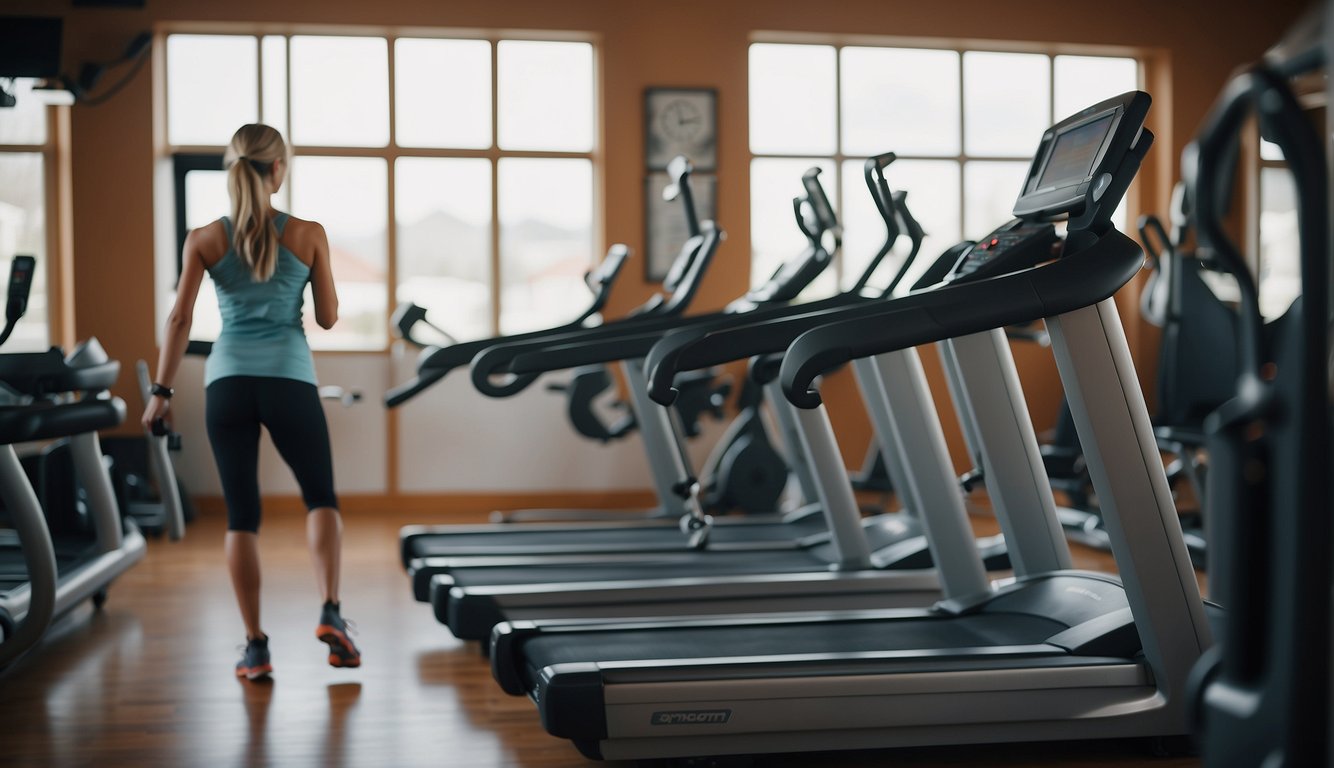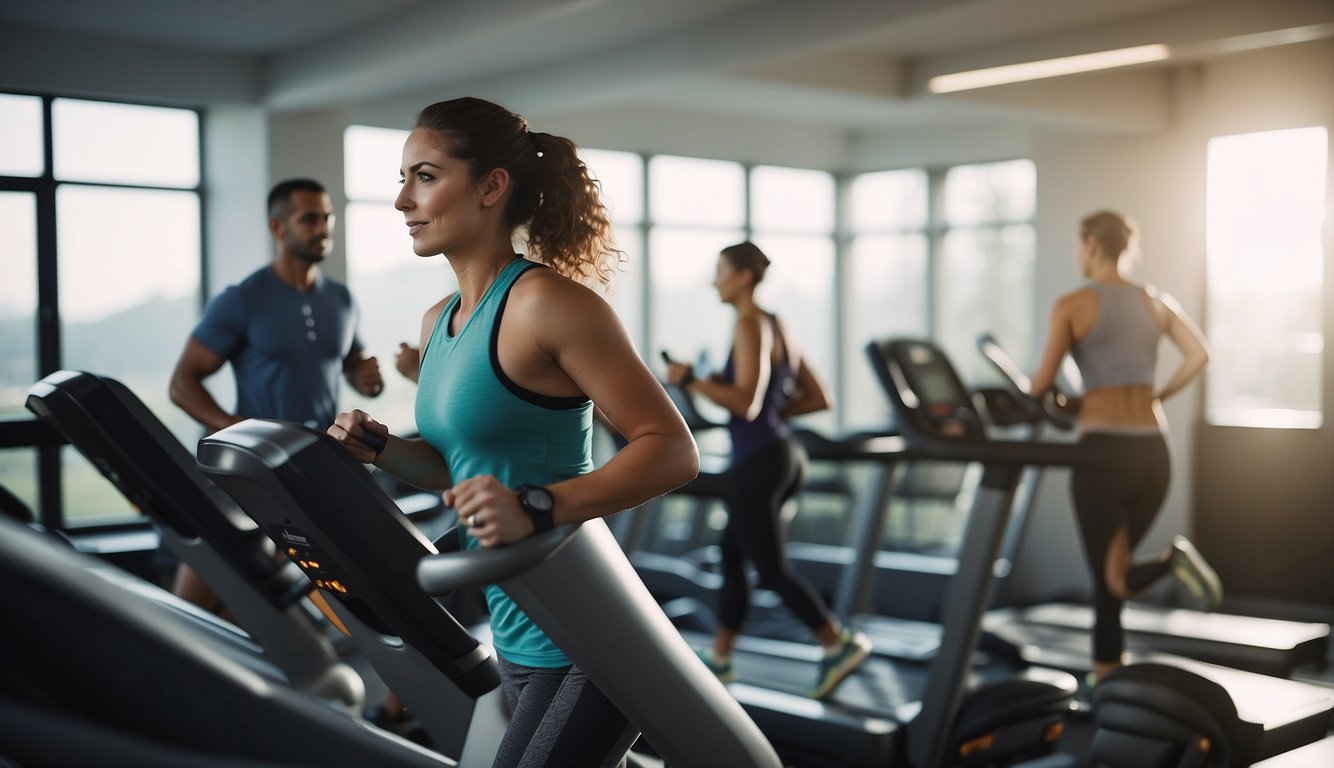When deciding between an elliptical machine and a treadmill, it is essential to consider one's personal health and fitness objectives. Treadmills are a staple in both gyms and home fitness environments, widely recognized for their capability to simulate natural walking or running.
This familiarity makes treadmills an attractive choice for individuals aiming to improve their cardio fitness, lose weight, or train for running events. Ellipticals, offering a low-impact alternative, are particularly suitable for those with joint concerns or looking for a full-body workout due to the incorporation of upper body movement.

Beyond health goals, practical considerations such as space availability and budget also play significant roles in choosing the appropriate machine. Each piece of equipment differs in size, features, and price point, thereby affecting the decision according to specific user needs.
Moreover, consulting with health professionals can provide tailored advice, ensuring safe and effective use of the equipment in alignment with individual health conditions and fitness levels. Both treadmills and ellipticals are reliable fitness tools that, when used with a good understanding of their applications, can significantly contribute to achieving one's fitness goals.
Key Takeaways
- Treadmills suit those focused on running or high-intensity cardio workouts.
- Elliptical machines offer low-impact exercise, ideal for full-body workouts and joint protection.
- Equipment choice should align with personal health, space, and budget considerations.
Evaluating Health and Fitness Goals

When it comes to achieving health and fitness goals, the choice between using a treadmill and an elliptical machine can influence one's progress. Each machine has distinct benefits for cardiovascular health, calorie burn, and muscle engagement, thereby catering to different fitness routines.
Cardiovascular Benefits
Using either a treadmill or an elliptical machine can significantly enhance cardiovascular health. Treadmills tend to be better for high-intensity cardio workouts, as they can help raise one's heart rate more effectively. Elliptical machines provide a cardiovascular workout that is gentle on the joints, making them suitable for individuals with joint pain or those recovering from an injury.
Weight Loss Considerations
For those targeting weight loss, the number of calories burned is a crucial factor. Running on a treadmill generally burns more calories compared to using an elliptical, aiding faster weight loss. However, ellipticals can still contribute to a caloric deficit when used consistently as part of a fitness routine and diet.
Strength and Endurance Training
Elliptical machines can target multiple muscle groups, such as the legs, arms, and core, promoting overall strength and endurance. In contrast, treadmills primarily focus on the lower body, but can be more effective for building leg strength and endurance due to the higher impact of running.
Flexibility and Low-Impact Options
Ellipticals are excellent for low-impact workouts, which reduce stress on the joints while still allowing for a range of motion that can improve flexibility. Treadmills can offer a low-impact exercise option if used at a walking pace, but typically they are associated with higher-impact activities like jogging or running.
Recovery and Injury Prevention
The elliptical machine's low-impact nature often makes it the preferred choice for those recovering from injuries or looking to prevent running-related injuries. Conversely, treadmills can be beneficial for gradually building up strength in injured muscles under controlled conditions, as long as one adheres to proper form and intensity.
Comparing Treadmills and Ellipticals

In the realm of fitness equipment, treadmills and ellipticals are two cardio machines that stand out due to their distinct design and impact on fitness. This section examines the mechanics, joint impact, resistance features, and versatility of each.
Design and Movement Mechanics
Treadmills imitate the natural movement of running or walking on a moving belt, allowing for a variation in pace and speed. Elliptical machines, on the other hand, offer a gliding motion with foot pedals travelling in an elongated circular path. This can be performed forward or backward, offering a different muscle engagement pattern compared to treadmills.
Impact on Joints and Muscles
Ellipticals provide a low-impact form of exercise, beneficial for individuals with joint issues such as arthritis or osteoporosis. The smoother motion reduces stress on the knees, hips, and other joints. Treadmills, while offering a more high-impact workout, can simulate real-world running conditions, which may be important for race training.
Resistance and Incline Features
Both treadmills and ellipticals have resistance settings to increase workout intensity. On many treadmills, an incline feature is available to mimic uphill movement, thereby intensifying the workout and engaging more muscles for potential strength training benefits. Elliptical machines often feature adjustable resistance, which can challenge the lower body and provide an upper-body workout through the use of moveable handlebars.
Cardio Machine Versatility
The versatility of these cardio machines is substantial. Treadmills offer customizable workouts, accommodating everything from a casual walk to an intense sprint. Elliptical machines provide variety in a workout not just through speed and resistance, but also with the ability to change direction, focusing on different muscle groups. Both machines are staples in exercise machine options for those seeking a comprehensive cardio workout.
Understanding Exercise Machine Usage
Choosing the correct exercise machine and using it properly is crucial to maximise fitness results and prevent injury. Whether one is running on a treadmill or gliding on an elliptical, understanding the nuances of usage can enhance the workout experience.
Proper Form and Posture
Maintaining correct form and posture is essential for an effective workout and minimising the risk of injury. When using a treadmill, users should walk, jog or sprint with a straight back, engaging their core muscles. On an elliptical, it's important to stand tall and not lean heavily on the handles, ensuring the back is not strained.
- Treadmill: Keep the back straight; posture should be upright.
- Elliptical: Align the spine; use handles lightly.
Workout Routines and Programs
Both treadmills and ellipticals offer a variety of workout routines and programs. A personal trainer can assist in programming a fitness routine tailored to one's goals, incorporating sessions ranging from steady-state cardio to high-intensity interval training (HIIT). Consistency and progression are key to advancing fitness levels.
- Treadmills are excellent for simulating hill runs or sprints.
- Ellipticals can provide low-impact cross-training with adjustable resistance.
Monitoring Progress and Intensity
Monitoring one's progress includes observing heart rate, speed, and resistance. Many gym machines are equipped with sensors to track heart rate, and displaying the current pace can help maintain or increase workout intensity. Utilising these features allows for targeted and efficient high-intensity workouts.
- Heart Rate: Essential for tracking endurance and intensity.
- Pace/Speed: Adjust to align with fitness goals, such as improving sprinting speed or endurance.
Maintenance and Longevity of Equipment
Proper maintenance of exercise equipment ensures longevity and consistent performance. Treadmills and ellipticals should be kept clean and checked regularly for wear and tear. Gym staff or specialists can perform regular services to keep machines in top condition.
- Treadmill: Lubricate the belt and inspect for any alignment issues.
- Elliptical: Check the joints and handles for looseness or noise.
Fitness Goals Alignment
When deciding between an elliptical trainer and a treadmill, aligning the equipment with your fitness goals is crucial. Both offer valuable cardiovascular exercise, but they differ in their approach to muscle engagement and impact on the body.
Cardio-Focused Training
Treadmills are excellent for those who are focusing on cardiovascular fitness. The simulation of natural running or walking motions makes treadmills ideal for aerobic workout regimes. They can help improve heart health and are a staple in many fitness routines.
Elliptical trainers, while also providing a good cardiovascular workout, offer the added benefit of engaging more muscle groups—including the upper body—making them suitable for full-body cardio sessions.
Building Strength and Muscle Tone
For muscle toning, an elliptical trainer can engage multiple muscle groups across the upper and lower body simultaneously. It particularly targets the glutes, hamstrings, and calves, whereas a treadmill primarily focuses on the lower body. However, increasing the incline on a treadmill can intensify the workout for the leg muscles, effectively building strength in the lower body.
High-Intensity Interval Training Adaptability
Both machines are adaptable to high-intensity interval training (HIIT). Elliptical trainers offer a changeable resistance level which can be increased for sprints, making them a convenient choice for quick bursts of high activity followed by periods of lower intensity.
Treadmills allow the user to adjust both speed and incline, which can be manipulated easily to create an effective HIIT workout to burn more calories.
Low-Impact Exercise for Recovery
Elliptical trainers are known for their low-impact workouts, which make them a better choice for individuals recovering from an injury or those with conditions like arthritis and osteoporosis. The reduced stress on joints enables users to maintain fitness without exacerbating health issues. While treadmills are higher impact compared to ellipticals, walking at a slow pace can also be a lower impact exercise option.
Practical Considerations for Home Gyms
When setting up a home gym, one must consider the practical implications such as space requirements, cost, safety features, as well as how the environment will affect workout routines.
Space and Equipment Placement
Selecting between a treadmill and an elliptical machine depends heavily on available space. Treadmills typically require a larger footprint and may not be suitable for compact areas. An elliptical can often be more space-efficient. It's important that there is adequate clearance around the equipment to ensure safety and ease of movement during exercise.
Cost of Investment
The cost of a treadmill or elliptical is a significant investment for a home gym. Treadmills often come with a wide range of prices and features, from basic models for beginners to advanced ones for serious exercisers. Ellipticals can be less costly but still represent a sizable expenditure. Consider the long-term value and quality of the gym equipment rather than just the initial outlay.
Safety and Ease of Use
Safety features are paramount, especially for seniors and beginners. Ellipticals are generally considered lower impact, which can reduce stress on the joints, making them a preferable option for these groups. Conversely, treadmills can offer a more familiar and natural walking or running experience. Assess which machine offers the better ease of use in a home environment and matches the users' fitness levels.
Weather and Environmental Factors
External conditions like weather can affect the consistency of an outdoor fitness routine. Consequently, one's choice of exercise machine for an indoor environment should reflect a resilience to the climate. A home gym provides a controlled climate that can support a regular event such as a daily workout, regardless of outside conditions. This can be particularly beneficial in Australia's varied climate.
Consulting Health Professionals
When considering exercise equipment like treadmills and elliptical machines, consulting health professionals is crucial for managing chronic conditions, ensuring safe recovery from injuries, and tailoring training programs to individual needs, all while integrating nutrition for overall wellness.
Managing Chronic Conditions and Pains
Individuals with chronic conditions such as arthritis or osteoporosis benefit greatly from the guidance of a doctor. They can advise on the most appropriate exercise equipment that minimises impact on sensitive joints. For example, an elliptical machine may be recommended due to its low-impact nature, which is gentler on the hips and knees.
Guidance Post-Injury
Recovering from an injury, particularly stress fractures or shin splints, requires professional input to prevent re-injury. Health professionals can suggest suitable activities, with treadmills often being appropriate for gradually increasing weight-bearing exercises under careful monitoring.
Personalised Training Programs
A personal trainer plays a pivotal role in developing a fitness routine that aligns with one's health objectives and progress. They consider any existing joint issues or limitations to create a balanced and effective workout regimen, potentially incorporating both treadmills and elliptical machines.
Nutrition and Fitness Synergy
Nutrition and exercise go hand in hand, especially in the context of weight loss and health. Dietitians can provide advice on a diet that supports an individual's workout routine, ensuring that their body is properly fuelled and able to recover optimally from exercises conducted on these machines.
Conclusion
When considering treadmill versus elliptical machines, individuals must assess their personal fitness goals, health, and wellness needs. The treadmill offers a straightforward running or walking experience, which may be better for those looking to improve their cardiovascular fitness or simulate outdoor running conditions. Conversely, ellipticals can provide a low-impact workout, which is beneficial for those with joint issues or for cross-training purposes.
-
Treadmills:
- Ideal for high-intensity running or walking
- Better for building bone density
- Can be more challenging for joints
-
Ellipticals:
- Lower impact on the body
- Engages more muscle groups
- May be less effective for bone health
The choice between the two should also factor in user preference for variety and ease of use, as enjoyment is a critical aspect of long-term exercise adherence. Research suggests that both treadmills and ellipticals are effective for increasing fitness levels, but the elliptical machine may be more advantageous to activate various muscle groups compared to treadmills and bikes.
Lastly, one must consider space availability and budget constraints, as both pieces of equipment require a financial investment and physical space within one's home or gym.
Choosing between a treadmill and an elliptical machine is a personal decision, but it is clear that both can contribute significantly to one's health and wellness journey. Therefore, the most suitable option will ultimately align with the user's specific preferences, goals, and physical needs.
Frequently Asked Questions
This section addresses common queries regarding the comparison and effectiveness of elliptical machines and treadmills.
What are the benefits of using an elliptical machine at home compared to a gym?
Using an elliptical machine at home offers privacy and convenience. There's no waiting for equipment, and individuals can workout at any time that suits their schedule.
How does the calorie burn on a treadmill compare to an elliptical during a 30-minute workout?
During a 30-minute workout, the calorie burn on a treadmill can vary but is often comparable to that of an elliptical. However, the exact expenditure depends on intensity and individual effort.
For toning glutes, which equipment is more effective – a treadmill or an elliptical?
An elliptical can be more effective for toning glutes as it allows for targeted muscle engagement through the gliding motion, often leading to better muscle activation in this area.
Which exercise machine is less likely to cause back discomfort, a treadmill or an elliptical?
An elliptical is typically less likely to cause back discomfort due to its low-impact nature, reducing stress on the back compared to the potential impact of running on a treadmill.
How effective is an elliptical workout in comparison with running for the same distance?
An elliptical workout is effective for cardiovascular health and calorie burn but is different from running. It offers low-impact exercise that may be better suited for individuals looking to reduce joint stress.
In terms of weight loss, is an elliptical or walking a more efficient exercise?
For weight loss, the efficiency of an elliptical can be higher than walking due to the potential for higher intensity workouts that engage more muscle groups, resulting in increased calorie burn.









